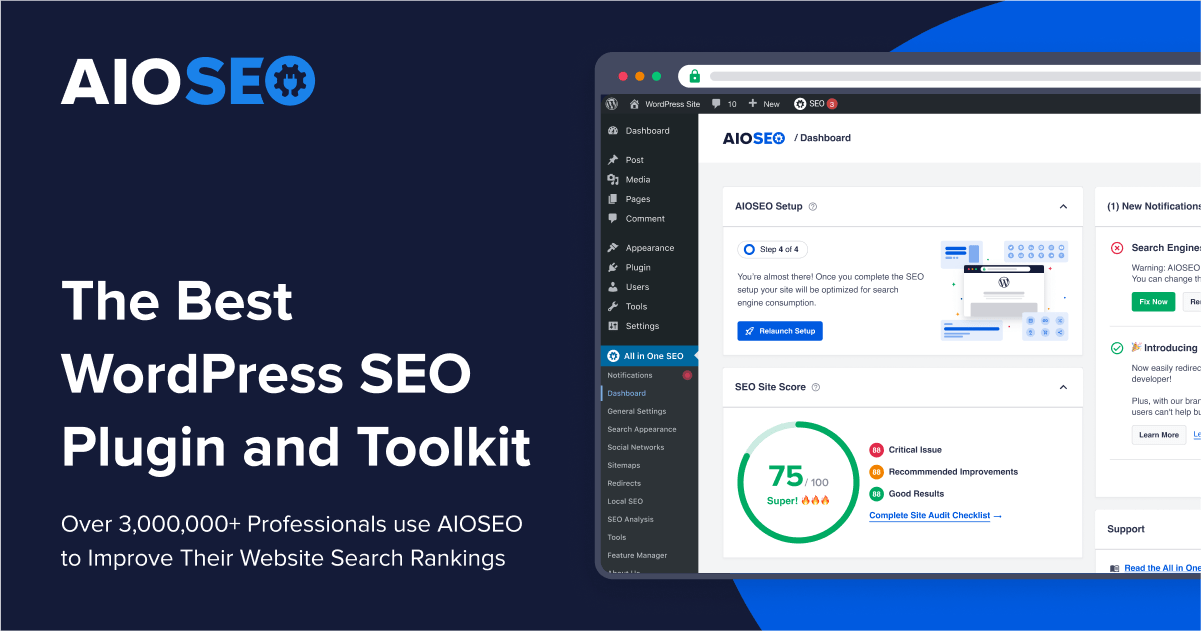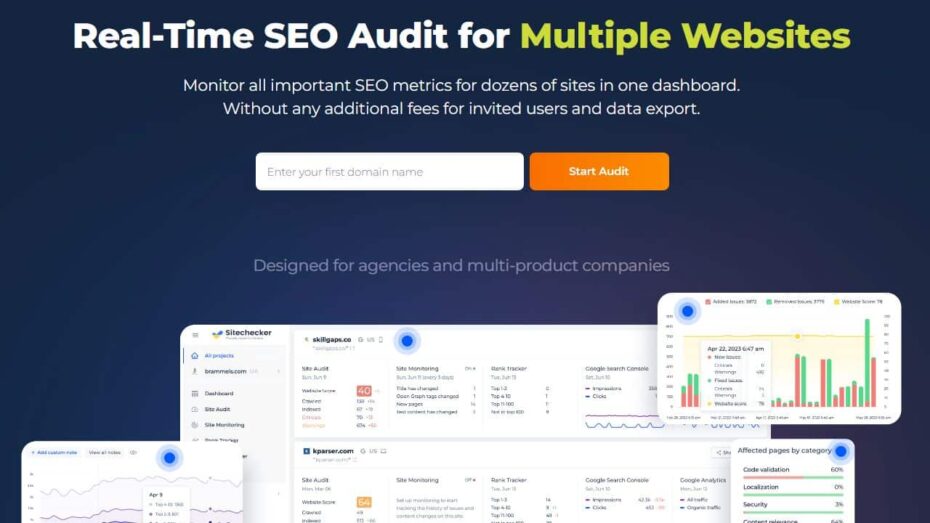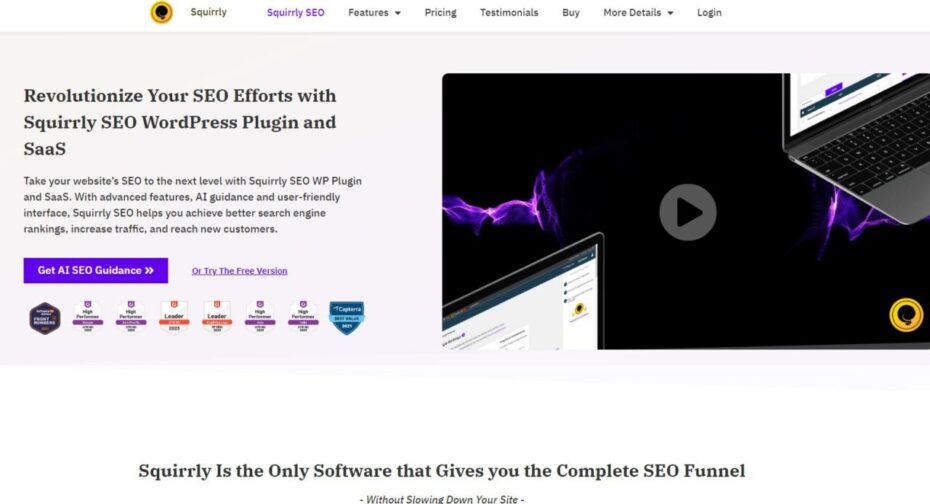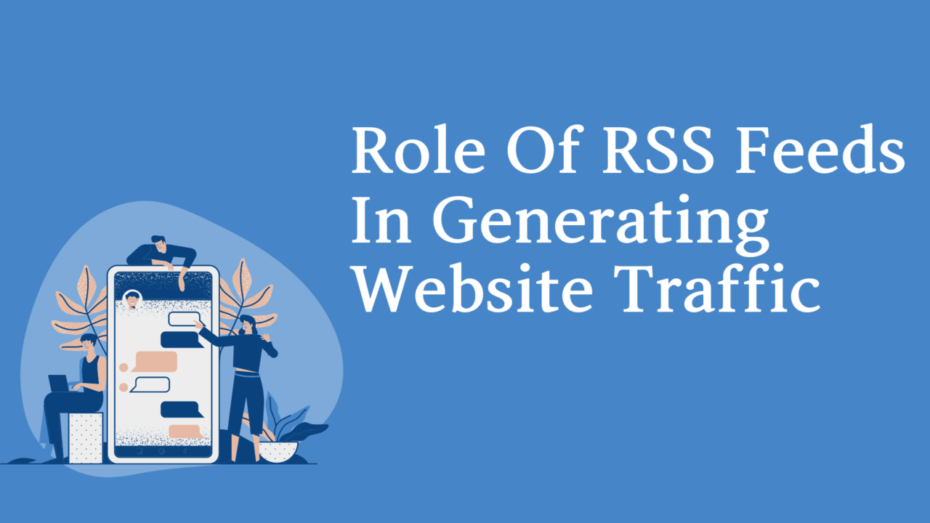Table of Contents
Are you looking to boost your website traffic effortlessly? Have you considered leveraging RSS feeds to enhance your online presence?
RSS feeds are powerful tools for spreading your content across the web and attracting more visitors. By implementing RSS feeds effectively, you can ensure that your latest posts and updates are automatically distributed to a broader audience.
This not only saves time but also improves your site’s SEO, potentially leading to higher search engine rankings and more quality backlinks. Let’s explore how RSS feeds can transform your approach to digital marketing and content distribution.
Discover the Power of RSS Feeds in Increasing Online Visibility
RSS feeds are a dynamic way to enhance your website’s visibility and attract a consistent stream of visitors. By broadcasting your latest content directly to your audience’s feed readers, you keep your followers engaged without them needing to check your site regularly. Most importantly, this continuous engagement helps in maintaining a strong and visible online presence.
Employing RSS feeds as part of your digital strategy enhances how quickly your content is indexed by search engines, improving both visibility and search rankings. This approach ensures that your audience always receives the freshest content, and your site gains increased exposure and traffic.
SEO Services Recommendations
 AIOSEO
|  Sitechecker
|  Squirrly
|
Unleashing the Potential: How RSS Feeds Spread Your Content Widely
RSS feeds serve as a direct channel to push updates and new posts to your subscribers automatically, increasing the reach of your content without extra effort. My advice is to make full use of RSS to keep your audience informed and engaged with your latest work.
The automatic distribution feature of RSS feeds means that your content can reach a broader audience faster than traditional email distributions. This method not only saves time but also enhances the efficiency of your content marketing strategy.
Additionally, RSS allows your content to be syndicated quickly across various platforms, which can lead to increased backlinks and improved SEO. I recommend leveraging these benefits to enhance your online presence significantly.
Finally, integrating RSS feeds into your social media strategy can extend your reach and influence. By linking RSS feeds with social media, every new post can automatically generate a social update, capturing a wider audience across multiple platforms.
The Mechanics of RSS Feeds: Boosting Site Exposure Effortlessly
Setting up RSS feeds on your website is simple, and it can vastly improve how you connect with your audience. My suggestion is to use tools that automate feed creation to streamline the process, ensuring that every piece of content you publish is immediately available to your readers.
RSS feeds help maintain user engagement by providing constant updates directly to their feed readers, enhancing user experience and site visits. This automatic process keeps your audience connected with minimal manual intervention.
Moreover, by facilitating smoother content delivery, RSS feeds ensure that your audience receives timely updates, which can lead to higher engagement rates and more frequent visits. I believe this is crucial for building a loyal audience base.
Lastly, the simplicity of RSS feeds can not be overstated; they are incredibly efficient in delivering content to a broad audience, making them a valuable part of any content distribution strategy. I advise you to integrate RSS feeds to not only save time but also to enhance your overall digital marketing efforts.
Comparing RSS to Other Traffic Generation Strategies
RSS feeds provide a straightforward, low-maintenance approach to driving traffic compared to other strategies that often require more time and resources. I think integrating RSS with these methods can create a comprehensive traffic plan that leverages the best of each approach.
While SEO and pay-per-click advertising can drive significant traffic, they often involve complex strategies and ongoing management. RSS feeds, in contrast, offer a consistent traffic source with minimal upkeep. My recommendation is to balance these efforts with RSS for optimal results.
In comparison to social media, which demands constant content creation and engagement, RSS feeds ensure your existing content remains working for you, continuously reaching new and existing subscribers. I strongly believe this is essential for maintaining engagement without overwhelming your schedule.
Finally, when used in conjunction with email marketing, RSS feeds can enhance your reach by ensuring all your communications are timely and relevant. I suggest using RSS to complement your email efforts, ensuring your audience receives all your content updates in a timely manner.
Effective Strategies to Optimize RSS Feeds for Better Reach
Optimizing RSS feeds can significantly enhance your website’s reach and ensure your content consistently engages the audience. My suggestion is to focus on fine-tuning these feeds to align with your SEO goals, thereby maximizing visibility and driving more traffic.
An effectively optimized RSS feed not only increases your site’s exposure but also helps in maintaining a steady stream of visitors. My advice is to implement strategic updates to your RSS setups to keep your content fresh and engaging for both new and returning visitors.
Best Practices for Setting Up RSS Feeds on Your Website
When setting up RSS feeds, it’s crucial to ensure they are easy to subscribe to and clearly visible on your site. I recommend placing RSS feed icons in prominent locations to encourage subscriptions, enhancing your site’s connectivity.
Ensure that your RSS feeds are regularly updated with new content. This consistency keeps subscribers engaged and helps maintain a dynamic connection with your audience. I advise scheduling regular content updates to maximize feed effectiveness.
Personalizing your RSS feeds to cater to different audience segments can greatly increase their effectiveness. By creating tailored feeds for various topics or content types, you cater to specific interests, which can enhance engagement and satisfaction.
Lastly, keeping your RSS clean and well-organized is essential for user experience. I point out that a clutter-free feed with well-defined categories and tags helps users find the content they’re interested in more easily, which can lead to increased interaction and loyalty.
Leveraging RSS for Enhanced Search Engine Rankings
RSS feeds can play a significant role in improving your website’s SEO by ensuring that search engines regularly index your site as you publish new content. I think it’s vital to use RSS feeds as a tool to notify search engines of new updates, thus speeding up the indexing process.
Incorporating keywords into your RSS feed titles and descriptions can further optimize your content for search engines. I strongly believe that this strategy enhances visibility and drives more targeted traffic to your website.
Furthermore, using RSS to distribute your content across various platforms can increase your site’s backlinks and overall SEO performance. My recommendation is to syndicate your content thoughtfully to maintain quality and relevance, which are crucial for SEO success.
Maintaining a clean XML structure in your RSS feeds ensures they are easily parsed by search engines, which improves your site’s readability and SEO. I advise you to regularly check your feed for any errors or issues that could impede its performance and address these promptly.
Tools and Plugins to Maximize Your RSS Feed Performance
Choosing the right tools and plugins is essential for maximizing the performance of your RSS feeds. I recommend you to explore options like FeedBurner or WordPress’s built-in RSS module to enhance feed functionality and analytics tracking.
Optimizing your RSS feed with analytics tools can provide valuable insights into subscriber behavior and content performance. I suggest integrating tools that offer detailed analytics to refine your content strategy based on user engagement and preferences.
Additionally, automating your RSS feeds to work seamlessly with social media platforms can significantly expand your content’s reach. I recommend using plugins that automatically post updates from your RSS feeds to social media, increasing your visibility across multiple channels.
Finally, ensuring your RSS feeds are mobile-friendly is crucial, as a significant portion of users accesses content on mobile devices. I advise you to test and optimize your RSS feeds for mobile platforms to guarantee a smooth and accessible user experience for all subscribers.
Analyzing the Impact of RSS Feeds on SEO Performance
Exploring how RSS feeds influence SEO performance reveals their potential in boosting search rankings. My recommendation is to integrate RSS feeds as part of a comprehensive SEO strategy, as they can significantly enhance your content’s visibility and search engine indexing speed.
RSS feeds facilitate consistent content updates, which search engines favor when ranking sites. This ongoing activity can help maintain your website’s relevancy and freshness in search results, leading to better SEO outcomes. I believe incorporating RSS feeds effectively will yield noticeable improvements in your SEO metrics.
Case Studies: RSS Feeds and Their Role in SEO Success
Several case studies highlight the positive impact of RSS feeds on SEO. For instance, websites that actively use RSS feeds often see faster indexing of content, which is crucial for staying relevant in search engine results. I advise examining these case studies to understand the specific benefits and best practices that can be applied to your strategy.
Moreover, websites leveraging RSS feeds typically experience increased engagement rates, as content is readily available and consistently refreshed. This heightened engagement signals to search engines that the site is valuable, thus improving its SEO standing. I point out that this is a key advantage of using RSS in your digital marketing efforts.
Analyzing the data from these case studies, it’s evident that RSS feeds can lead to a higher page rank and more frequent crawling by search engines. My suggestion is to use these insights to tailor your RSS strategy to capitalize on these benefits.
Finally, the case studies also reveal that RSS feeds can enhance your site’s authority by providing fresh, relevant content that meets user and search engine expectations. I strongly believe that this continuous stream of quality content is essential for building and maintaining high SEO rankings.
Key Metrics to Watch When Using RSS Feeds for SEO
Monitoring specific metrics can help gauge the effectiveness of RSS feeds in your SEO strategy. I recommend keeping an eye on the crawl rate, which indicates how often search engines visit your site to check for new content—a vital metric that can improve with effective RSS feed management.
Another crucial metric is the engagement level of content distributed via RSS feeds. Observing changes in user behavior, such as time spent on page and bounce rates, can provide insights into how well your content satisfies user needs. I suggest using these metrics to fine-tune your content for better performance.
Subscriber growth rate is also indicative of how well your RSS feeds are performing. An increasing subscriber count usually correlates with improved content reach and SEO benefits. I would say monitoring this metric allows for timely adjustments in your marketing strategy.
Lastly, the rate of backlinks gained through content shared via RSS is a powerful indicator of SEO success. More backlinks generally mean higher authority and better search rankings. I advise you to track this metric to assess the impact of your RSS-driven content on your overall SEO profile.
RSS Feeds and Their Synergy with Other SEO Techniques
RSS feeds work exceptionally well when integrated with other SEO techniques. For instance, combining RSS with content marketing and keyword optimization can amplify your content’s reach and relevancy, thus enhancing your SEO efforts. I recommend you to harness this synergy to maximize your digital footprint.
Pairing RSS feeds with social media marketing can also significantly boost your SEO. By automatically sharing updates through social platforms, you extend your content’s reach and engage a broader audience. I advise you to streamline this process with automation tools for maximum efficiency.
Moreover, using RSS feeds in conjunction with email marketing campaigns can help reinforce your content’s visibility and engagement. This strategy ensures that all your bases are covered, from direct visitor traffic to search engine rankings. I point out that a holistic approach is often the most effective.
Finally, the integration of RSS feeds with technical SEO practices, like sitemap updates and meta tags, can create a cohesive and robust SEO strategy. Ensuring that your technical SEO components align with your RSS tactics is essential for achieving the best results. I will emphasize that this comprehensive integration can lead to substantial improvements in your site’s SEO performance.
Mastering RSS Feeds to Achieve Perfect Backlinks
Utilizing RSS feeds effectively can significantly enhance your backlink profile, which is crucial for SEO success. My advice is to optimize your RSS feed to not only disseminate content but also to attract quality backlinks naturally. This approach ensures that your content’s reach and authority are continually growing.
When well-managed, RSS feeds serve as a seamless conduit for promoting your content across the web, attracting attention from other site owners who might link back to your valuable resources. I believe focusing on this aspect of RSS feeds can lead to substantial improvements in your site’s search engine rankings.
How RSS Feeds Can Naturally Attract Quality Backlinks
RSS feeds, by broadcasting your latest content, provide an opportunity for other websites to discover and link to your articles. I suggest ensuring that each piece of content shared via RSS is high-quality and offers unique insights, which increases the likelihood of earning backlinks.
Moreover, by regularly updating your feed with fresh and relevant content, you maintain a level of engagement that keeps your site on the radar of influencers and content creators. This continuous visibility is key to attracting backlinks naturally. My recommendation is to keep your content dynamic and engaging to sustain interest and encourage backlinks.
Additionally, integrating keywords strategically within your RSS content can attract niche-specific audiences and websites, which are more likely to provide valuable backlinks. I point out that targeting a specific audience with tailored content can significantly boost the quality of backlinks.
Finally, by using RSS feeds to distribute your content, you increase the chances that it will be featured in industry roundups, blogs, and news sites, which are excellent sources of high-quality backlinks. I advise you to track where your content is shared and engage with those communities to foster more substantial links.
The Role of Content Quality in Gaining Backlinks through RSS
The quality of your content directly influences the effectiveness of RSS feeds in generating backlinks. I strongly believe that well-researched and well-written articles are more likely to be referenced and linked by other sites, thereby enhancing your SEO efforts.
It’s important to ensure that your content not only informs but also engages and provides value to your readers. I recommend focusing on creating content that addresses the needs and questions of your audience, which will naturally encourage other sites to link to it as a resource.
Furthermore, updating your RSS with consistent, quality content helps establish your site as an authority in your field. I would say this reputation makes other content creators more inclined to use your site as a reference, thus increasing the number of backlinks.
Another critical factor is the originality of your content. Unique insights and new information tend to attract more attention and, consequently, more backlinks. I advise you to invest in original research or unique perspectives that can set your content apart.
Strategies for Promoting Your RSS Feed to Gain Backlinks
Promoting your RSS feed effectively is crucial for maximizing backlink potential. I recommend using social media platforms, forums, and other digital marketing channels to increase the visibility of your RSS feed. This broader exposure can lead to more backlinks as more websites become aware of your content.
Collaborating with other bloggers and websites in your niche can also be beneficial. By sharing each other’s RSS, you can mutually benefit from the increased exposure and potential backlinks. I suggest establishing partnerships with sites that share a similar audience to yours.
Moreover, incorporating your RSS URL in guest posts and on social media profiles can also drive more subscriptions and, in turn, more backlinks. I point out that making your RSS feed as accessible as possible is key to leveraging its full potential.
Lastly, consider submitting your RSS to directories and aggregation platforms. These sites can help amplify your content’s reach and improve your chances of getting noticed by high-authority sites, which can lead to quality backlinks. I advise you to research and select reputable directories that align with your content strategy.






